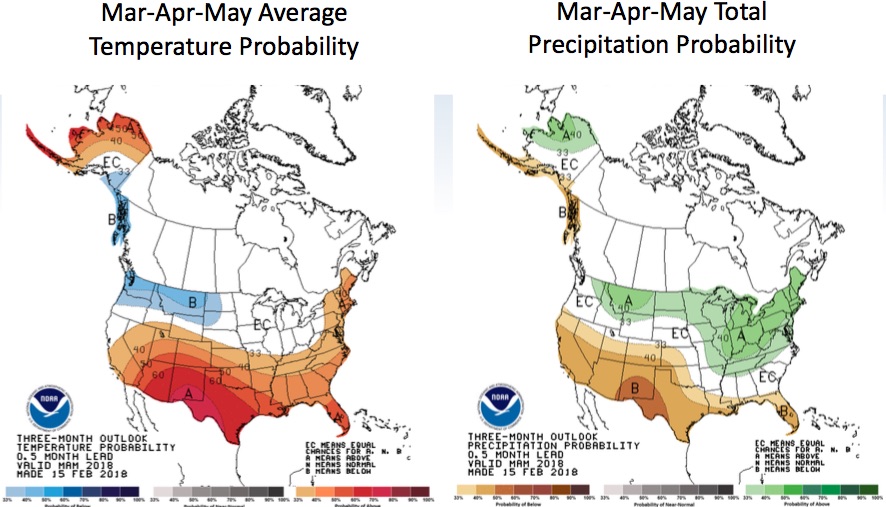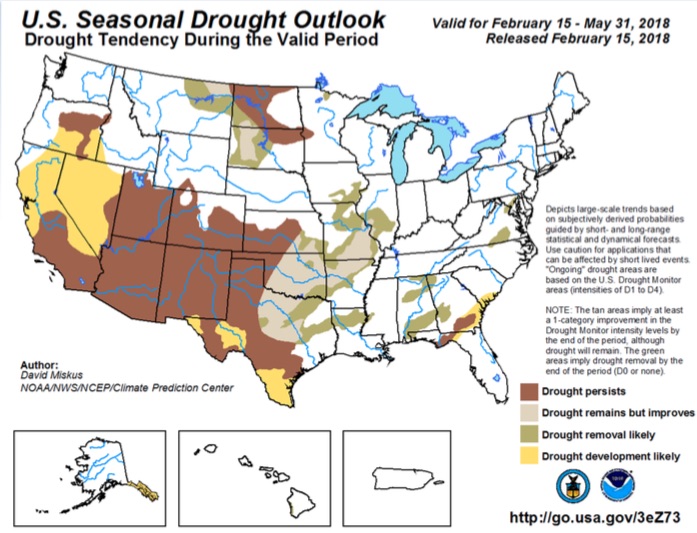Here's What You Can Expect from This Spring's Weather

Is the United States heading into a chilly and rainy spring, or a tepidly warm and drought-ridden one? The answer, as always, depends on your location, according to the March, April and May weather outlook released today (Feb. 15) by the U.S. Climate Prediction Center (CPC).
Temperatures will be lower than usual in parts of the Pacific Northwest and Northern Rockies. But higher-than-average springtime temperatures are expected in northern Alaska and parts of the West, Southwest, South, Southeast and Northeast, according to the CPC, which is part of the National Oceanic and Atmospheric Administration (NOAA).
Meanwhile, keep your umbrella handy if you live in northern Alaska, or the upper parts of the United States, as greater-than-normal precipitation is expected. In contrast, the lower part of the country will likely see extremely dry weather, and maybe even drought conditions, the CPC told reporters. [9 Tips for Exercising in Winter Weather]
As for what's behind this weird weather, experts say you can thank La Niña and climate change.
La Niña is a natural climate cycle that features cooler-than-usual ocean waters around the central and eastern Pacific. In fact, it describes the predicted spring 2018 weather almost to a T.
La Niña tends to "lead to more of a chance of below-normal precipitation across the southern United States," said Dan Collins, a weather forecaster at the CPC. "And it leads to more of a chance of above-normal precipitation across much of the northern parts of the United States."

Meanwhile, La Niña also has a tendency to create "below-normal temperatures across parts of the northern United States, especially [in] the Northwest and into the Midwest," Collins said. And "La Niña tends to produce above-normal temperatures across much of the southern United States."
Sign up for the Live Science daily newsletter now
Get the world’s most fascinating discoveries delivered straight to your inbox.
Scientists also factored long-term, climate change trends into the three-month seasonal outlook by looking at the last 10 to 15 years of temperature and precipitation across the country.
"Recent decades have been generally warmer than previous decades, and that influences our seasonal outlook," Collins said. "This is particularly true in the Southwest, and it's less so in other regions."
But the above-normal level of rain predicted to hit the Northeast "is partly attributable to decadal trends," Collins said.
Original article on Live Science.

Laura is the archaeology and Life's Little Mysteries editor at Live Science. She also reports on general science, including paleontology. Her work has appeared in The New York Times, Scholastic, Popular Science and Spectrum, a site on autism research. She has won multiple awards from the Society of Professional Journalists and the Washington Newspaper Publishers Association for her reporting at a weekly newspaper near Seattle. Laura holds a bachelor's degree in English literature and psychology from Washington University in St. Louis and a master's degree in science writing from NYU.










